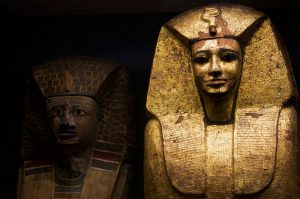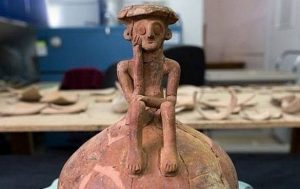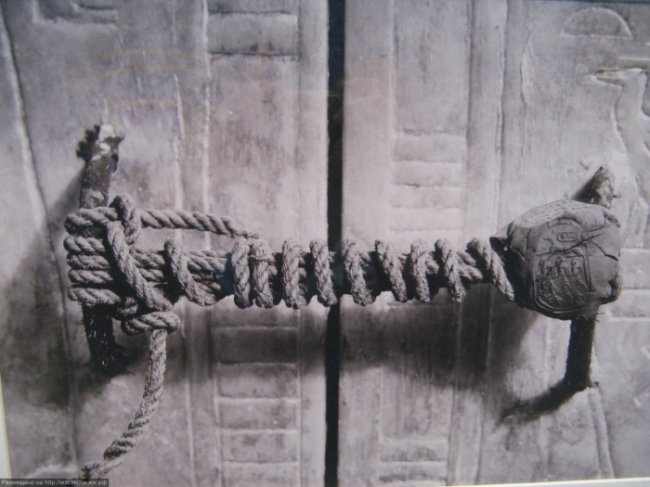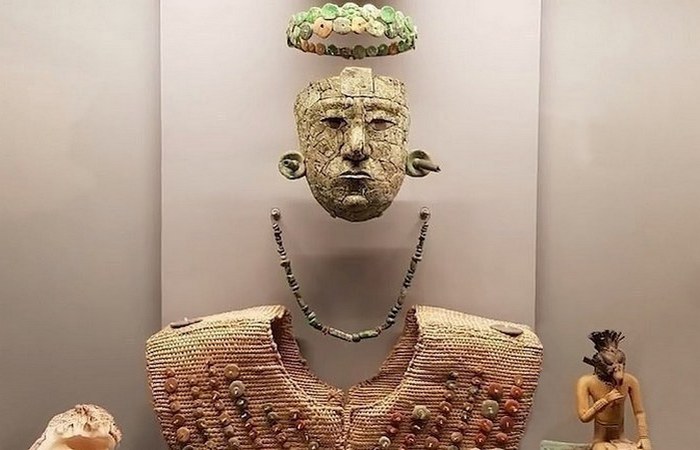archaeologists discovered
4 intriguing scientific versions of how the ancient Egyptians looked
 In 2014, Ridley Scott removed his biblical epic “Exodus: Kings and Gods” and accidentally unleashed a rather unexpected conflict. In the film, the ancient Egyptian characters are played by white actors, and this angered those who believe that the Egyptians were dark-skinned. But what did the ancient Egyptians actually look like? Most Egyptologists insist there is no reason to believe that the modern concept of race can be applied to the Egyptians. Nevertheless, there are some historical “clues” about what the Egyptians could look like, although we will immediately make a reservation that these are just versions.
In 2014, Ridley Scott removed his biblical epic “Exodus: Kings and Gods” and accidentally unleashed a rather unexpected conflict. In the film, the ancient Egyptian characters are played by white actors, and this angered those who believe that the Egyptians were dark-skinned. But what did the ancient Egyptians actually look like? Most Egyptologists insist there is no reason to believe that the modern concept of race can be applied to the Egyptians. Nevertheless, there are some historical “clues” about what the Egyptians could look like, although we will immediately make a reservation that these are just versions.
1. Herodotus
The Greek historian Herodotus, who wrote a lot about Egypt around 450 BC, was one of the first to indirectly shed light on the appearance of the ancient Egyptians. Continue reading
Decorations of Neanderthals, figurines from Ghana and other ancient art objects, which pushed for scientific discoveries
 People just need food, air, water and creative expression. And so, judging by the findings of archaeologists, it was even millions of years ago. Perhaps some works of art created by our distant ancestors seem naive and ridiculous, but still archaeologists believe that Neanderthals had a subtle sense of fashion, ancient artists took the risk to create their paintings, and at least one ancient musical instrument used in our day.
People just need food, air, water and creative expression. And so, judging by the findings of archaeologists, it was even millions of years ago. Perhaps some works of art created by our distant ancestors seem naive and ridiculous, but still archaeologists believe that Neanderthals had a subtle sense of fashion, ancient artists took the risk to create their paintings, and at least one ancient musical instrument used in our day.
1. Neanderthals used “wearable sequins”
Several discoveries in Spain show that Neanderthals were much more advanced than previously thought. The first such discovery was made in 1985 in Cueva de los Aviones, a cave in Murcia. There, archaeologists discovered a bunch of holed shells, which, according to them, tens of thousands of years ago were strung on a string and worn as a necklace. Continue reading
Ambiguous facts from the Bible, about which today archeologists and religious scholars argue
 Perhaps there is no other such book in the world in which so many contradictions are found as in the Bible. There are constantly heated debates between atheists, archeologists and religious scholars, and the main one is whether the Book of Books can be regarded as a reliable historical source.
Perhaps there is no other such book in the world in which so many contradictions are found as in the Bible. There are constantly heated debates between atheists, archeologists and religious scholars, and the main one is whether the Book of Books can be regarded as a reliable historical source.
1. Gummy in the mask of mummies
In one of the ancient Egyptian tombs a unique find was made – in the burial mask of the pharaoh they found a fragment of the oldest known Gospel. Scientists believe that this text dates from the I century of our era. The content of the text archaeologists do not disclose. It is only known that the burial mask was made of flax with the addition of glue and paint. Inside the mask were found and other documents – personal and business letters of the deceased. It was they (and also the hydrocarbon analysis) that made it possible to determine the exact age of the burial and papyrus.
It is believed that all the books written under the general title “Gospel” were written several decades after the earthly life of Jesus. Today, the oldest copy of the Gospel texts dates from the II-III centuries. Continue reading



